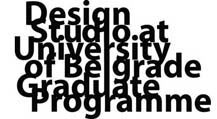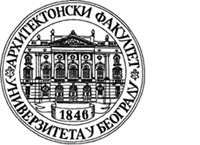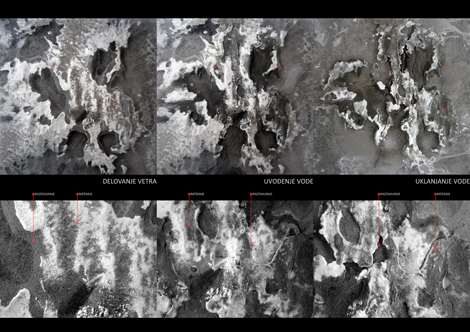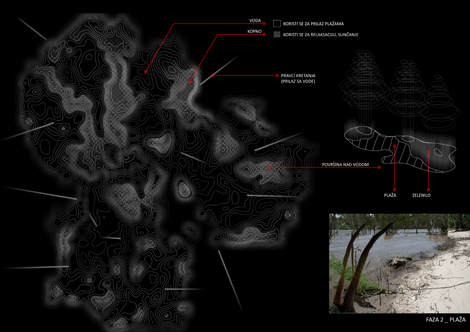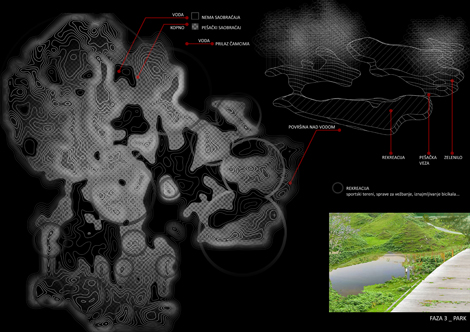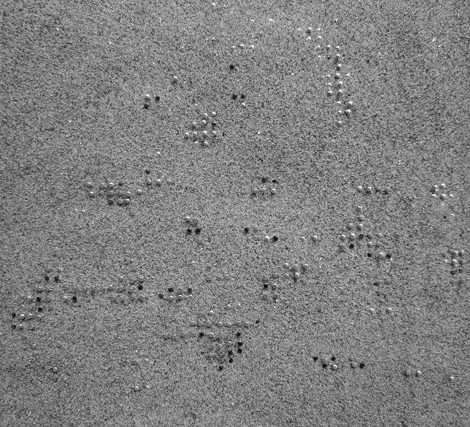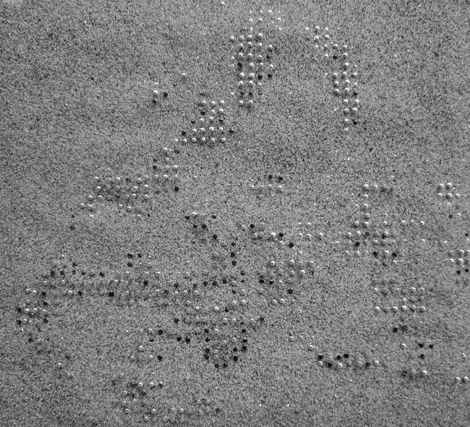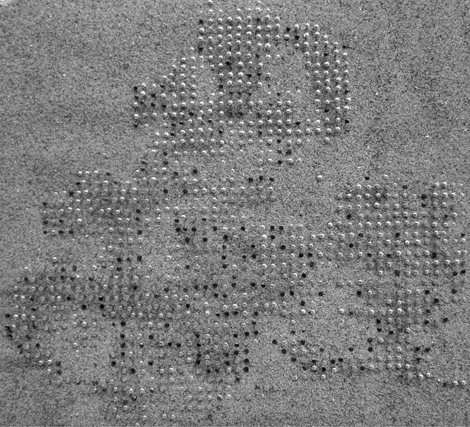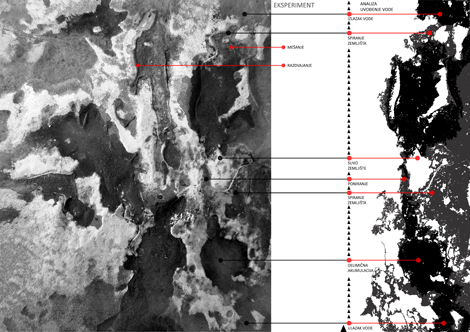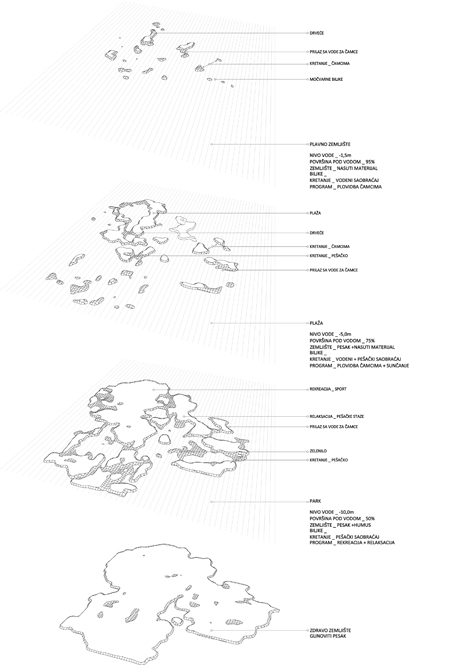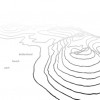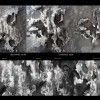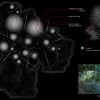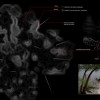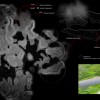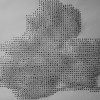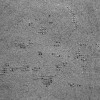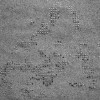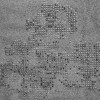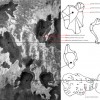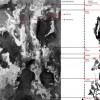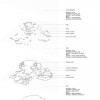This project develops a formal strategy for landscape creation in an analogy with the material processes triggered by weather conditions over long periods of time. The proposal explores condensed potential of natural forces, such as wind and atmospheric precipitation, in the formation of landscape. Material based studies form the first phase of the design process. In laboratory-like conditions, layers of sand and white flour were exposed to the simulated wind force and rainfall in order to explore formal possibilities of the proposed system. In relation to the natural configuration of the terrain, thicker and heavier layer of sand material was placed below the layer of white floor. Importantly, the upper layer of white flour presents more contaminated segment of the soil as concluded from data gathered during the most recent environmental survey at the location. When subjected to the of wind force, particles of sand and floor move and mix. Similarly, all granular matter is redistributed when water is let in. Previously flat topography turns into an undulating landscape, characterized with hills and basins. Formerly separate layers of sand and flour interact and produce color patterns, whereby white color indicates ring-like vestiges of the contaminated soil. A significant portion of white flour or contaminated matter is gradually rinsed away with streams of water. The outcomes of the experiment are documented at several stages upon each more wind force and atmospheric precipitations were introduced into the system. The final goal was to produce topography with the minimum of white particles corresponding to the minimum of surface pollution.
Projekat se bavi istraživanjem delovanja atmosferskih uticaja u procesu transformacije terena. U eksperimentalnim uslovima je analiziran uticaj vetra i vode na teren. Upotrebljen je fen kao izvor vetra, sloj peska kao sloj glinovitog peska na dubini od 9,20 do 27,30 metara i sloj brašna kao sloj nasutog materijala na dubini od 0,00 do 9,20 metara. Posmatrano je međusobno delovanje ovih slojeva. Fen, tj. vetar je delovao na ove slojeve, dok se oni nisu rasuli sa podloge, koja predstavlja zdravo zemljište. Nakon delovanja vetra uvodi se voda na teren, koja ima ulogu spiranja sloja nasutog materijala. Ponovo je posmatrano međusobno delovanje slojeva, kao i akumuliranje i poniranje vode. Voda deluje na teren sve dok se ne stvori tok i dok na nekoj tački ne izađe sa terena. Posmatranjem jedne studije slučaja delovanja vetra i vode na maketu, konfigurisan je reljef brda i udubljenja. Proces čišćenja zemljišta vetrom i vodom je uključen u život lokacije, pa je proces dobio tri faze, u zavisnosti od nivoa vode na lokaciji i nivoa zagađenosti zemljišta.
The first phase is the bottomland phase: the water level on the location is at its peak and water flushes 95% of the polluted soil. At the same time, the terrain above the water level is in the phase of phytoremediation. All of the cleaning processes are included in the program, which is based on the usage of boats for relaxation and fishing without the land traffic.
Prva faza je faza plavnog zemljišta: nivo vode na lokaciji je najviši i voda spira 95% zemljišta koje je zagađeno. Istovremeno, teren koji je nad vodom je u fazi fitoremedijacije. Svi procesi čišćenja su uključeni u program, koji se u ovoj fazi bazira na upotrebi čamaca za relaksaciju i ribolov, bez kopnenog saobraćaja.
The second phase is the beach phase: the water level decreases, and 75% of the soil is under water. The terrain above the water is used for relaxation and sunbathing. Pedestrian traffic is introduced, though the water traffic still prevails as a main mean of accessing and moving throughout the location.
Druga faza je faza plaže: nivo vode se smanjuje, pod vodom je 75% zemljišta. Teren nad vodom se koristi za relaksaciju i sunčanje, uvodi se pešački saobraćaj, ali je i dalje dominantan vodeni saobraćaj kojim se pristupa i kreće na lokaciji.
The third phase is the park phase: 50% of the land is under water. The water is used only for approaching the location, while the pedestrian traffic is carried strictly on land. The infrastructure is introduced: walkways and jogging tracks. The land is used for sports, recreation and relaxation.
Treća faza je faza parka: pod vodom je 50% terena. Sa vode se samo pristupa lokaciji, dok se pešački saobraćaj odvija isključivo na kopnu – uvodi se infrastruktura: pešačke staze, staze za trčanje. Površine se koriste za sport, rekreaciju i relaksaciju.
1112M5 Ana Todosijević 00 animacija
